The Ohio Archaeological Inventory (OAI) is maintained by the State Historic Preservation Office (SHPO) and serves as the official record of all known prehistoric and historic archaeological sites in Ohio.
The OAI is used by the SHPO, and state, local, and federal agencies to assist with land-use planning, urban development, and road improvements. Decisions are often influenced by the presence of important archaeological sites, sometimes leading to project redesigns to avoid site destruction. Researchers and consultants also use the OAI as an archive and information resource.
Whether you are an archaeological consultant, academic researcher, or a public participant, you can play an important role in discovering, recording, and preserving Ohio's archaeological history.
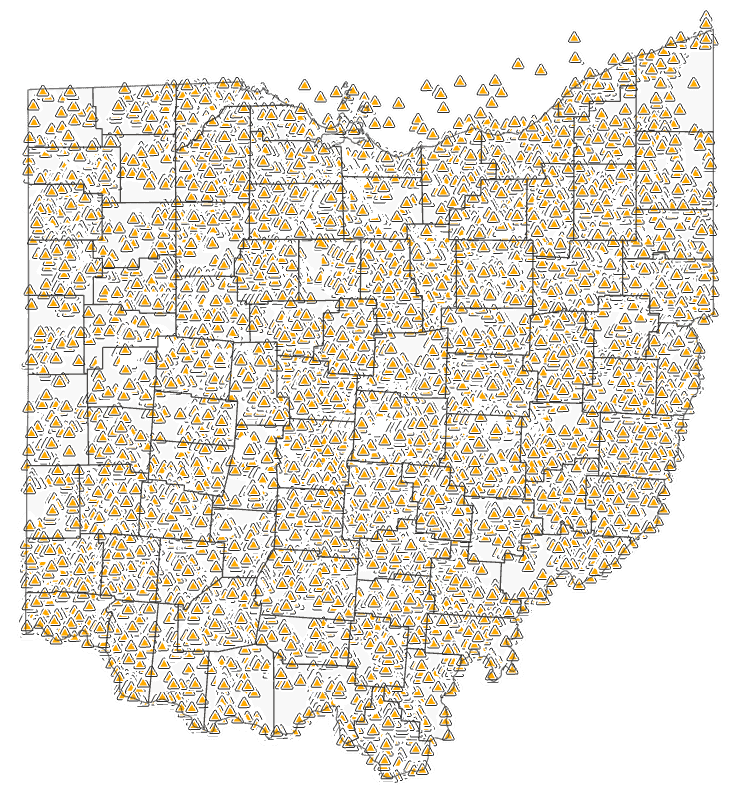
Section 106 of the National Historic Preservation Act and Section 149.30 of the Ohio Revised Code require the SHPO to maintain a statewide inventory of archaeological sites. Similarly, consultants must record sites identified during fieldwork to the OAI.
To view sites, use our Online Mapping System (the Online Mapping System is presently under construction; please see the website for more information). For access to OAI site forms and survey reports, please Contact Us.
Connect with our Inventory & Registration Staff.
The OAI, along with its supporting archival records and spatial data, is a valuable resource for academic and professional researchers, preservation consultants, and agency planning. Researchers are encouraged to list new sites onto the OAI using Survey123, especially those important for identified or investigated outside the Section 106 process.
For more information on beginning research or to list sites onto the OAI, Contact Us or the Archaeology Survey & Data Manager.
The OAI contains over 60,000 sites, with 1,000 added each year!
Public members, including landowners and avocational archaeologists, have contributed over 1,000 sites to the OAI. To list a site, review our Guidelines on Reporting Archaeological Sites and carefully document the following details before Contacting Us:
For further guidance, see the Preliminary Documentation Form. If you need a professional archaeologist, the SHPO maintains a Consultants List of qualified professionals.
Visit our Cemetery Preservation webpage for information on preventing or reporting cemetery vandalism.
Before conducting investigations on state property, you must obtain permission from the relevant agency and a permit from the Ohio History Connection.
Collecting artifacts from federal property or private land without permission is illegal and can result in severe penalties under the Archaeological Resources Protection Act.
Inclusion in the OAI does not automatically register or nominate a property to the National Register of Historic Places. Sites listed to the OAI helps alert the preservation community, and local and state officials of the presence of Potentially Eligible sites.
Currently, 204 prehistoric sites listed onto the OAI are also listed onto the National Register.
For more information on the nomination process, visit our National Register of Historic Places page.
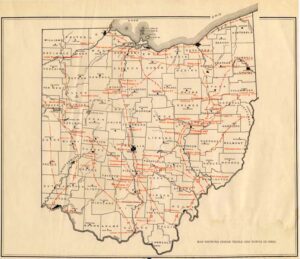
Archeological Atlas of Ohio (1914)
Early Inventory of Archaeological Sites
In 1895, Warren K. Moorehead, the first curator of the Ohio History Connection, began a comprehensive archaeological survey of Ohio. Moorehead documented over 3,000 mounds and earthworks during this time. The first female curator of the Ohio History Connection, Lucy Allen, continued documenting sites to the inventory in 1989. By 1914, William C. Mills published the results in the Archaeological Atlas of Ohio, identifying around 5,400 sites.
In the 1930s, curatorial assistant and Lithic Lab supervisor, H. H. Ellis, began to meticulously organize archaeological site documentation by county and plotted their locations on topographic maps. Until the 1950s, Ellis frequently made site visits to confirm the details and location of reported archaeological sites submitted by the public. His work laid the foundation for the formal Ohio Archaeological Inventory that we know today.
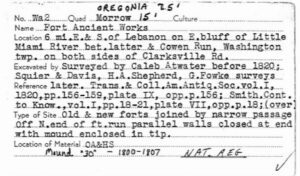
3x5" catalog card for Fort Ancient (33 WA 2)
Site Numbers: The Smithsonian Trinomial
Each site listed in the OAI receives a unique site number, formally known as a Smithsonian Trinomial. This numbering system was introduced in the early 20th century, during the federal archaeology projects of the Work Relief era, and continues to be used to identify archaeological sites by most SHPOs today.
Ohio History Connection archaeological curators at this time were able to use Ellis' site documentation and card catalog to begin assigning site numbers to confirmed archaeological sites in Ohio.
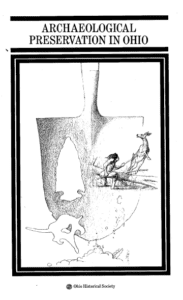
Front cover of SHPOs Archaeological Preservation in Ohio
The Ohio Archaeological Inventory
In 1966, the National Historic Preservation Act (NHPA) mandated the creation of SHPOs. Headquartered in Columbus, Ohio, by 1978 the Ohio SHPO would come to have 11 regional offices across the state. Most regional offices were housed within universities, like Kent State University, Wright State University, and the University of Toledo.
During this time, the SHPO formalized the organization of and access to OAI records. By 1976, the Ohio SHPO had inventoried 1,500 sites. In 1977, the SHPO publication. Archaeological Preservation in Ohio. introduced the official two-page OAI form. The state archaeological guidelines were revised in 1994, and shortly after the Ohio Archaeological Inventory Instruction Manual was published in 1995. This manual introduced the ten-page OAI form and the Isolated Find form.
The OAI in the Digital Age
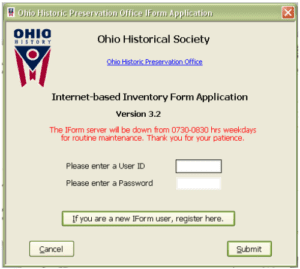
The pop-up login window for IForm
In 1988, a grant from the U.S. Army Corps of Engineers allowed SHPO to digitize over 17,000 OAI forms. In 1991, microfilming of the OAI and its associated 20,000 records began.
By 1998, the OAI was incorporated onto a GIS-based database, resulting in the MAPIT platform. Today, the Online Mapping System is used to facilitate access to all SHPO inventories.
IForm, the digital OAI form submission platform, was introduced in 2006 and was officially retired in 2023.
Today's Archaeological Inventory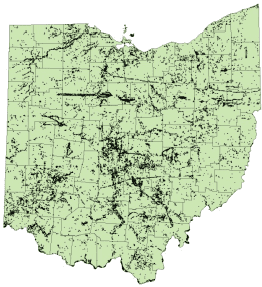
Following the retirement of IForm, the SHPO transitioned to using Esri’s Survey123 for OAI submissions. The OAI currently includes over 60,000 archaeological sites, with around 1,000 new sites added each year.
In addition to maintaining access to site documentation, the SHPO also retains copies of Section 106 reporting and other documents relating to the history of archaeological survey in Ohio.
Whether you are submitting OAI forms via Survey123, are an academic researching Ohio's archaeological sites, or a member of the public who is aware of an archaeological site - we are here to help you!
